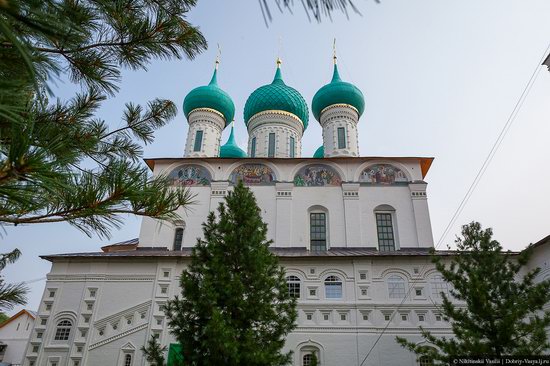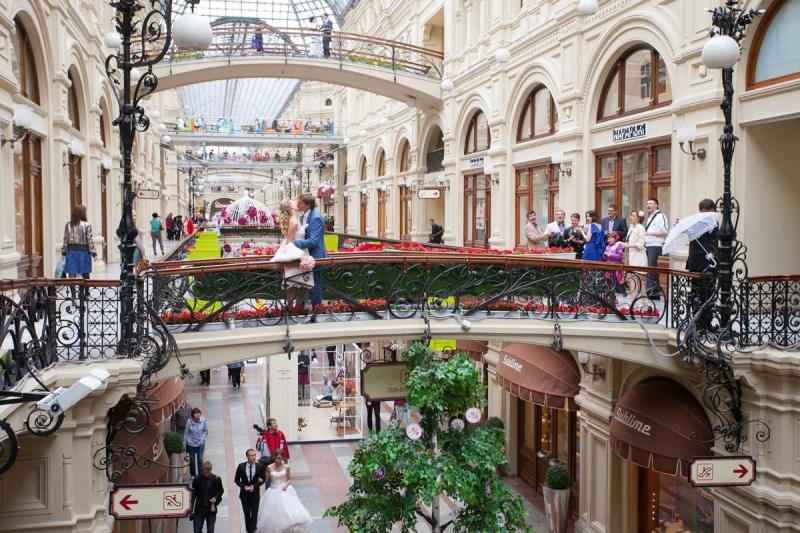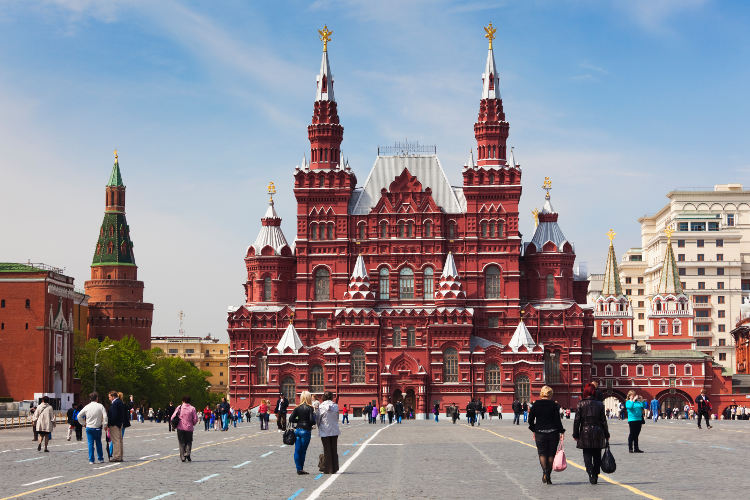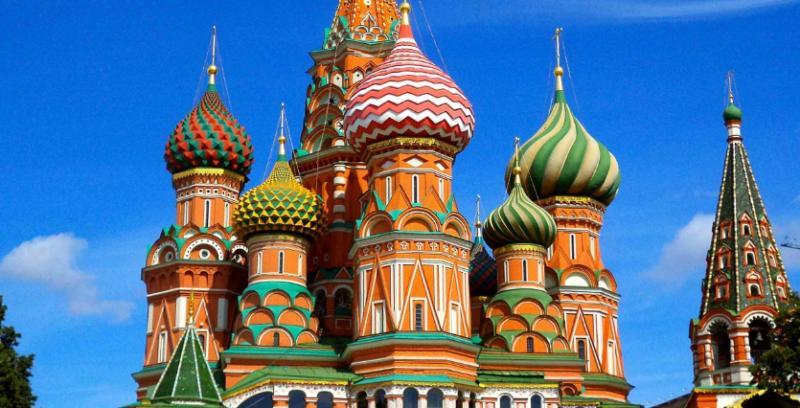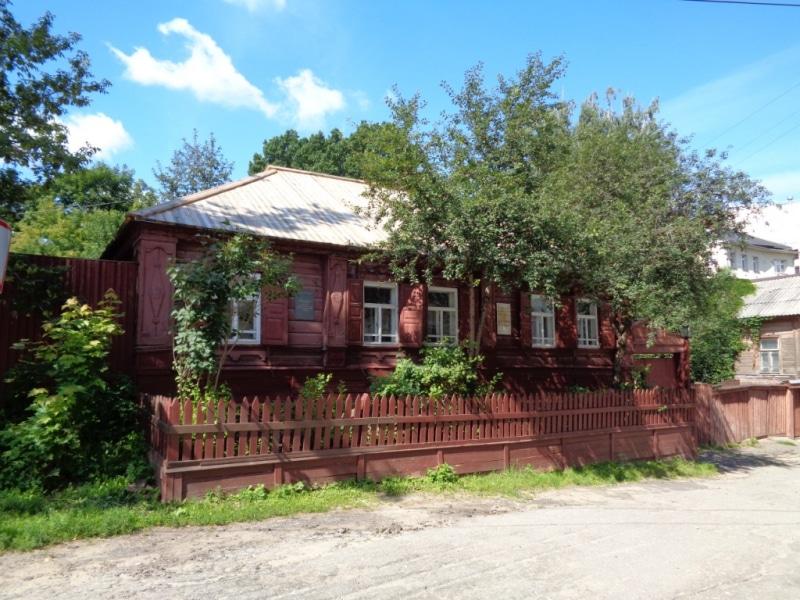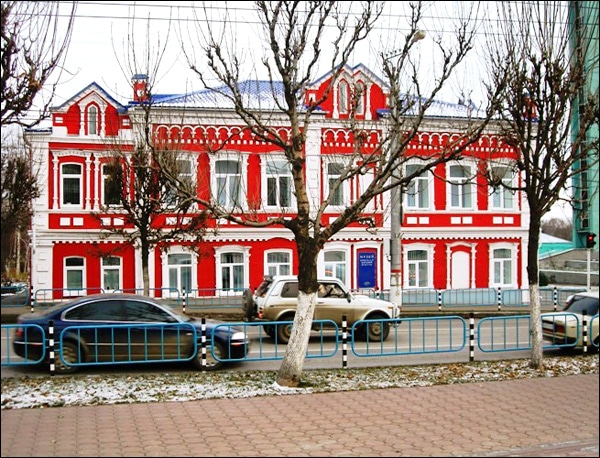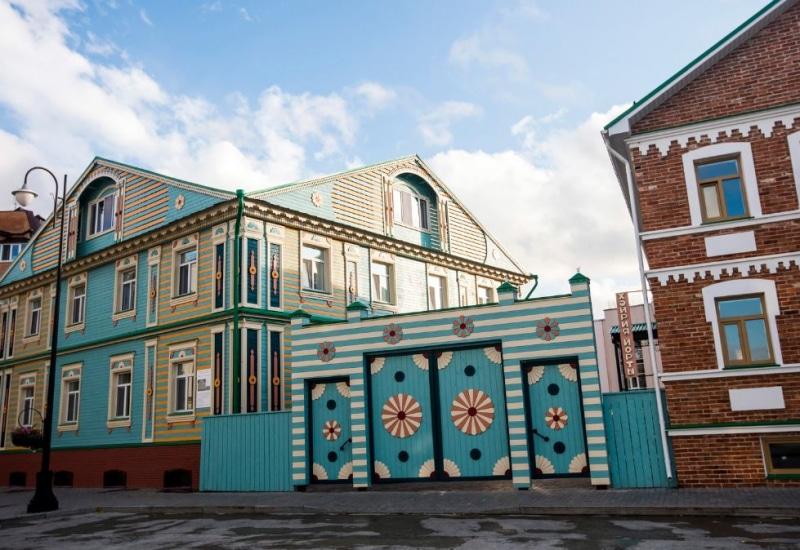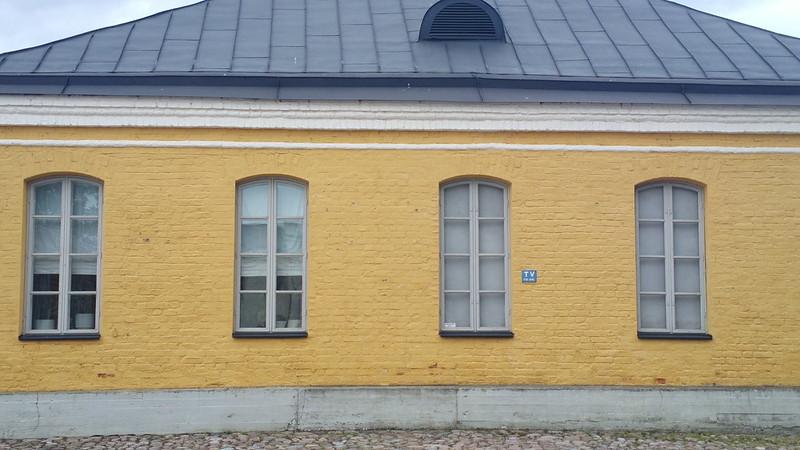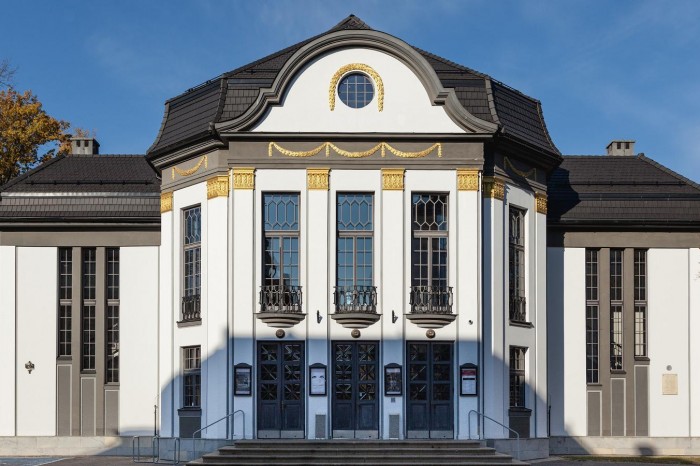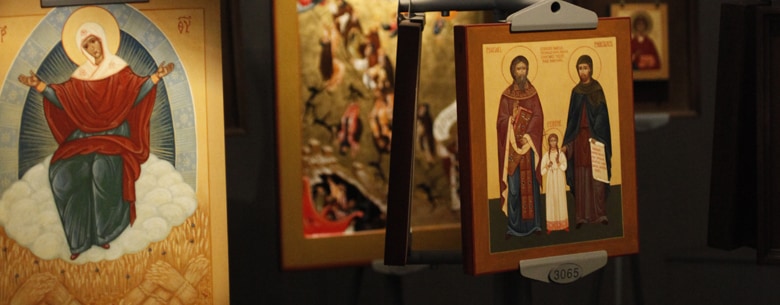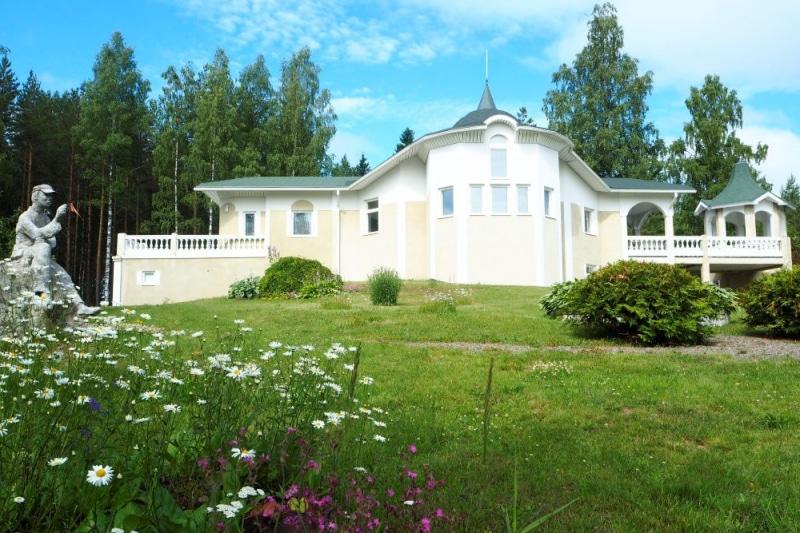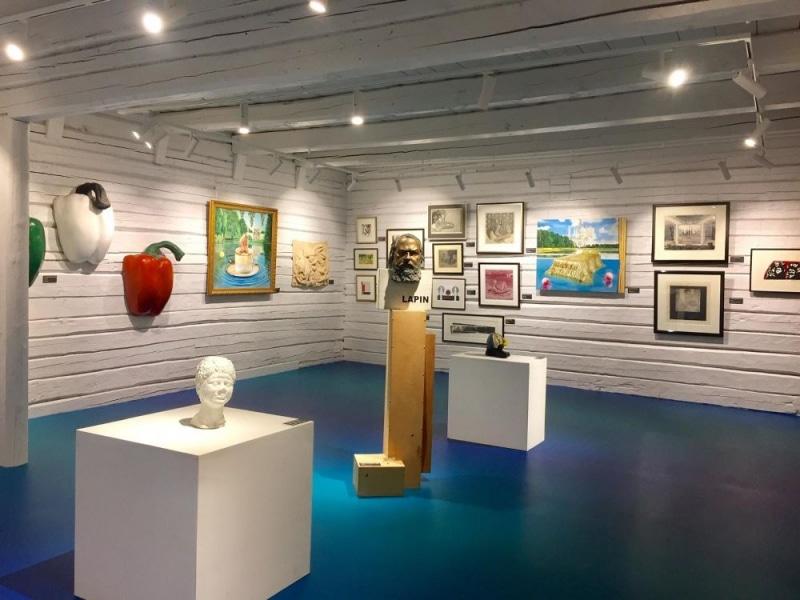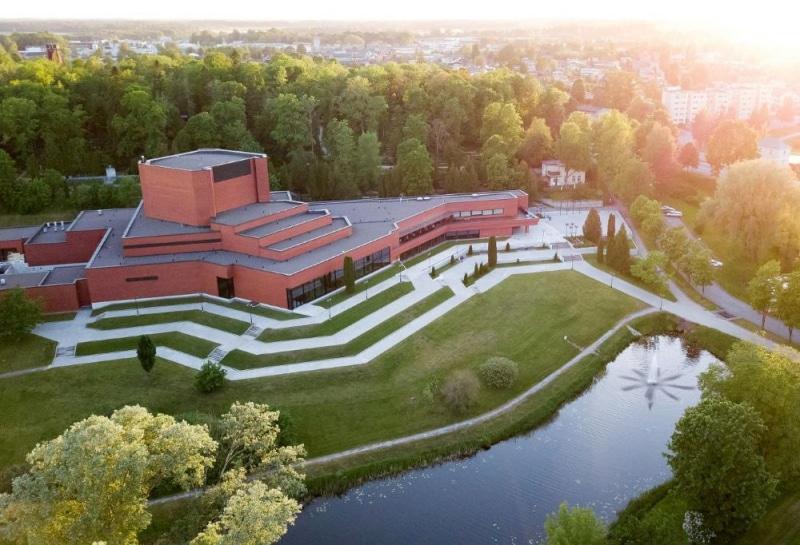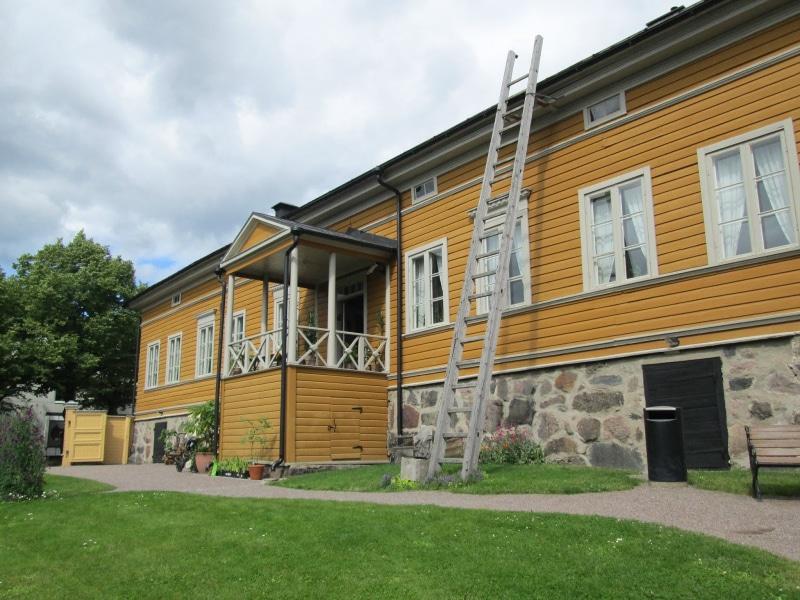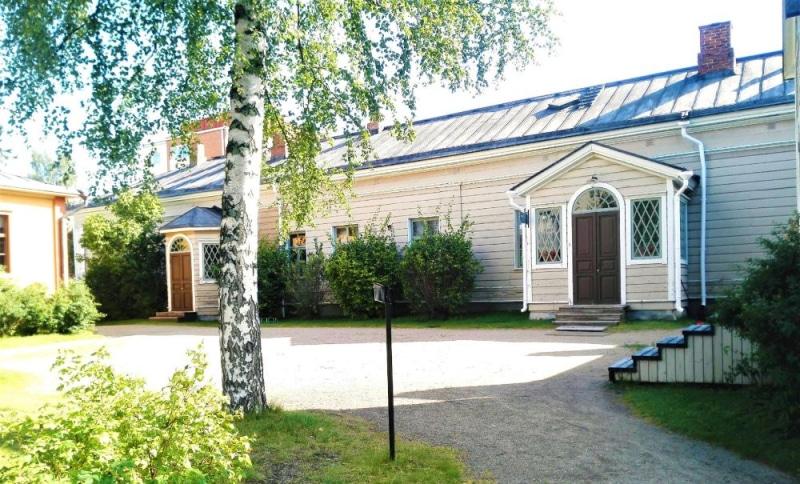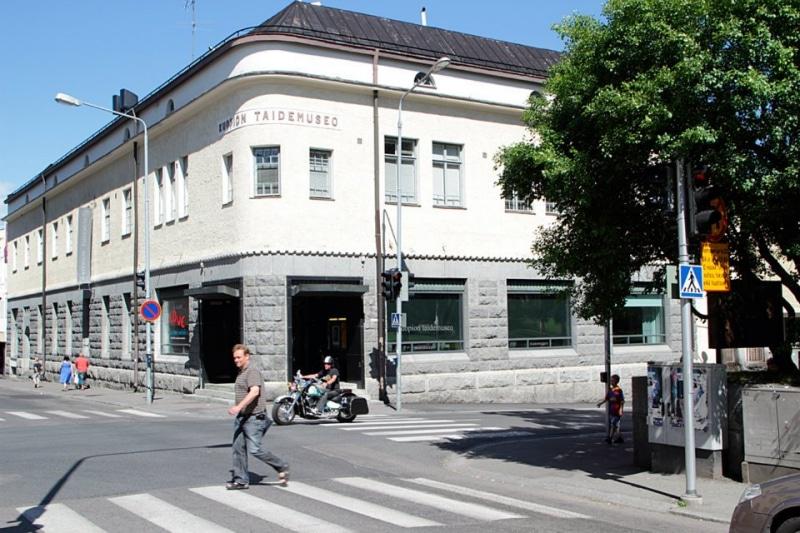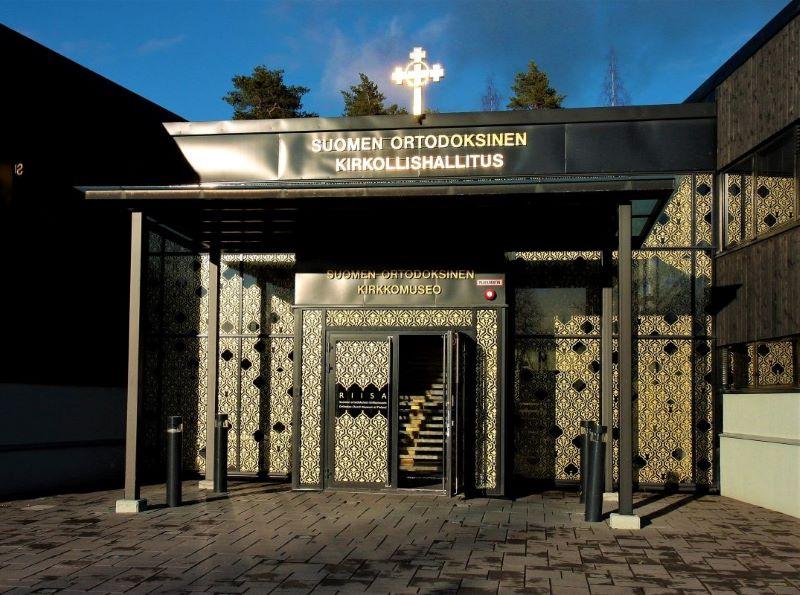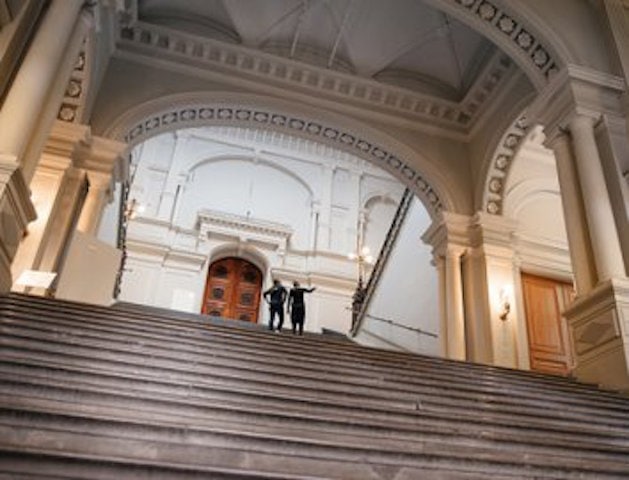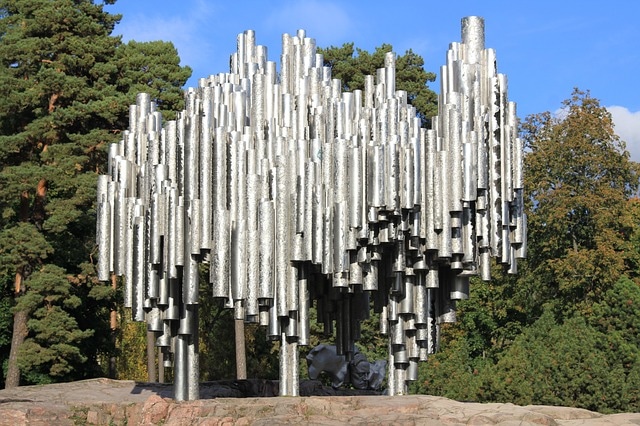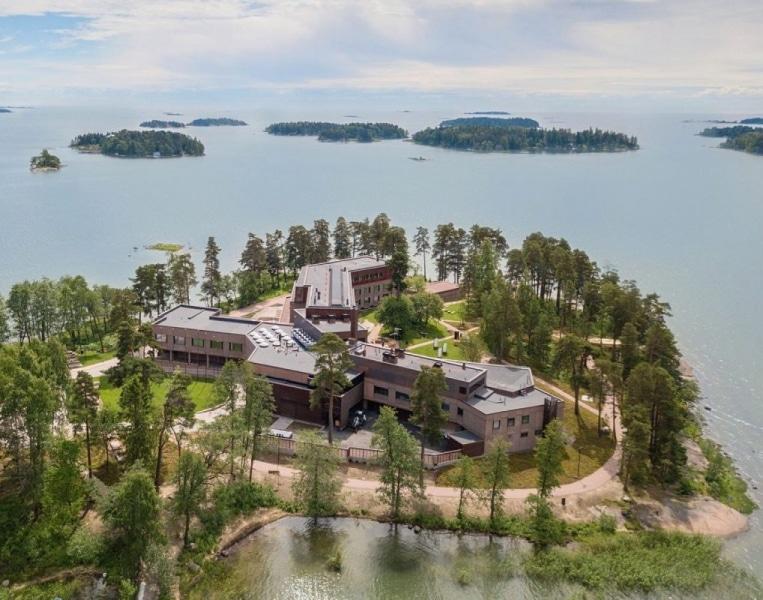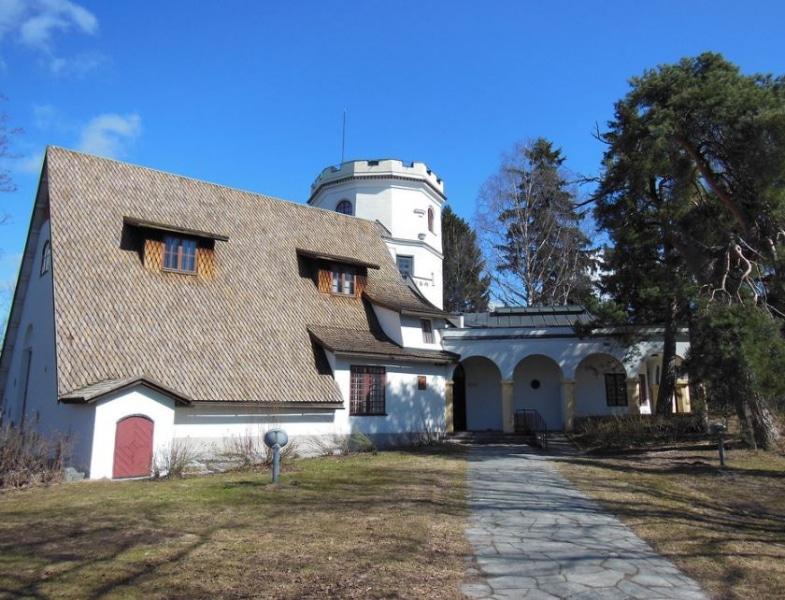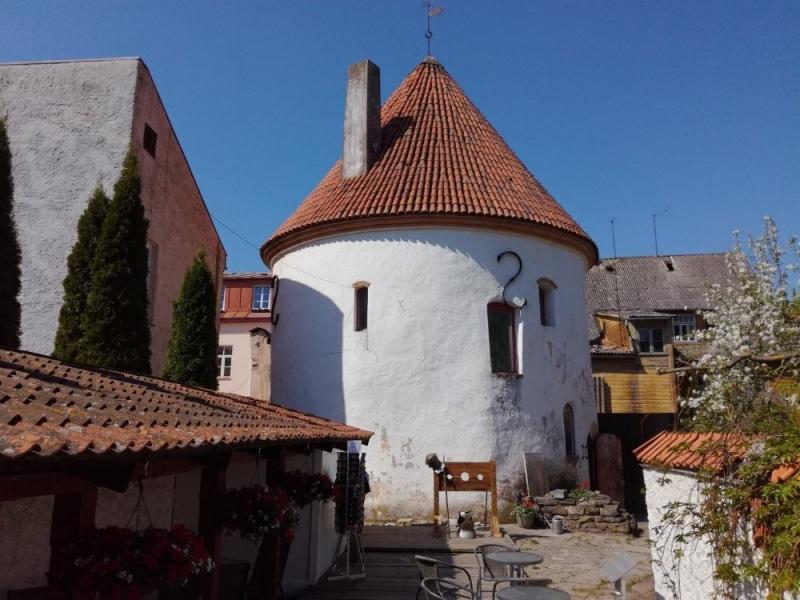ArtandCulture, Yaroslavl
Removed from Unnamed collection
Vvedenskiy Tolga Convent
Vvedenskiy Tolga Convent is located on the outskirts of Yaroslavl, on the left bank of the Volga River. You can easily get here by water-bus from the city center. http://russiatrek.org/blog/travel/beautiful-vvedenskiy-tolga-convent-in-yaroslavl/
Map
Explore more places related to this search:
Removed from Unnamed collection
Bolshoi Theatre
The Bolshoi Theatre began its life as the private theatre of the Moscow proseсutor Prince Pyotr Urusov. On 28 March 1776, Empress Catherine II signed and granted the Prince the 'privilege' of organizing theatre performances, masquerades, balls and other forms of entertainment for a period of ten years. It is from this date that Moscow's Bolshoi Theatre traces its history.
The Bolshoi building, which for many years now has been regarded as one of Moscow’s main sights, was opened on 20 October 1856, on Tsar Alexander II’s coronation day.
On 29 October 2002 the Bolshoi was given a New Stage and it was here it presented its performances during the years the Historic Stage was undergoing massive reconstruction and refurbishment.
The reconstruction project lasted from l July 2005 to 28 October 2011. As a result of this reconstruction, many lost features of the historic building were reinstated and, at the same time, it has joined the ranks of most technically equipped theatre buildings in the world.
The Bolshoi Theatre is a symbol of Russia for all time. It was awarded this honor due to the major contribution it made to the history of the Russian performing arts. This history is on-going and today Bolshoi Theatre artists continue to contribute to it many bright pages. http://www.bolshoi.ru/en/about/hist/history/
Map
Removed from Unnamed collection
GUM
Today GUM lives like it once was conceived. It is ideal shopping city of Moscow that seems to live without losses and catastrophes for 120 years already. The fountain in the center of GUM was reopened and pleases visitors since 2007. This legendary construction is captured in the official chronicles of the twentieth century and in millions of private shots. They say, the sound of a shutter can be heard every three seconds here today. The legendary cinema, which went down in the history of the national movie-making, was restored. Unique illumination project was carried out on the facade. GUM-Skating rink was opened at Red Square in 2006, which at once gained the fame of the brightest ice rink of the capital.
GUM is not just a store where you can buy almost everything. It is a shopping block where there is a pharmacy, bank branch, and flower shop ... It is a monument of architecture. It is a comfortable lounge area with restaurants and cafes. It is an art gallery and venue for cultural events. It is an integral part of Russian history. It is a symbol of Moscow and it is the closest place to the Kremlin, where you can feel yourself in Europe! https://gumrussia.com/
Map
Removed from Unnamed collection
Red Square
Being the most recognizable symbol of Russia in the world, the glorious Red Square is the UNESCO listed World Heritage which accepts thousands of tourists each year. No wonder that this sight is a true must-visit of any Moscow trip and every adventurous globe-trotter has a picture in front of St. Basil's Cathedral.
The Red Square is set in the very heart of Moscow, separating the Kitay Gorod commercial district from the Kremlin walls, and has a history as old as the post-Mongol fortress itself. The name "Krásnaya Plóshchaď" translates from Russian as "red", yet the word also means "beautiful". This ancient center of Russia's political power dates back to the end of the 13th century and has a long and rich history.
Originally, it was the site of a central market square established in an area cleared by decree for the defense of Kremlin on the banks of Moskva and Neglinnaya rivers. It was also a place where various festive processions were held and thus the square was considered a sacred place. https://www.travelallrussia.com/red-square
Map
Removed from Unnamed collection
St. Basil s Cathedral
St. Basil’s Cathedral is Moscow’s most famous artistic work of architecture. Also called "Pokrovsky Cathedral" or "The Cathedral of Intercession of the Virgin by the Moat", it is the most recognizable Russian building. This Cathedral is to the Russians what the Eiffel Tower is to the French, an honorable symbol of their past, present, and future.
The cathedral stands on the Red Square, facing the Ivory Gate Chapel. The St. Basil's Cathedral history started in 1555 by the order of Ivan IV ("Ivan the Terrible") in celebration of the defeat of Kazan, the last remaining grip of the Mongol Empire on European lands.
Today there are more than 400 icons painted between the 14th and 19th centuries by the most famous schools of Novgorod and Moscow hanging on the walls.
A narrow pathway leads you from one alter to another, passing through a wooden spiral staircase so well hidden in a wall, that it was only found during the 1970 restoration of the cathedral. Taking in the medieval aura and mystical spirituality of St. Basil’s imbues visitors with what can only be described as a quintessential Russian experience. https://www.travelallrussia.com/st-basil-moscow
Map
Removed from Unnamed collection
Armoury Chamber
The Armoury Chamber, a treasure-house, is a part of the Grand Kremlin Palace's complex. It is situated in the building constructed in 1851 by architect Konstantin Ton. The museum collections were based on the precious items that had been preserved for centuries in the tsars' treasury and the Patriarch's vestry. Some of the exhibits were made in the Kremlin's workshops, others were accepted as ambassadorial gifts. The museum was named after one of the oldest Kremlin's treasury stores.
The Armoury Chamber preserves ancient state regalia, ceremonial royal clothes and coronation dresses, vestments of Russian Orthodox Church hierarchs, the most extensive collection of gold- and silverware made by Russian craftsmen, West European artistic silver, ceremonial arms and armour, carriages and horse ceremonial harness.
The State Armoury presents more than four thousand items of applied art of Russia, European and Eastern countries of the 4th - early 20th century. The highest artistic level and particular historical and cultural value of the exhibits have made the State Armoury of the Moscow Kremlin a world-wide known museum. http://armoury-chamber.kreml.ru/en-Us/history/view/
Map
Removed from Unnamed collection
Tretyakov Gallery
The Tretyakov Gallery is the main museum of Russian national art, reflecting its unique contribution to world culture. It is a hospitable museum that is known for its rich collection and variety of presented ideas. Check out the best works of Russian art from different eras and authors. On Currently the collection includes more than 180 000 pieces and is regularly updated. The Collection presents major masterpieces from the permanent exhibition.
Also visit The New Tretyakov Gallery which presents the most completed in our country permanent exhibition of the art of the 20th century in all its diversity - avant - garde, socialistic realism and art of the "austere style" and "underground" and some new art trends. Here are held not only large-scale retrospectives of great Russian artists, but also showed experimental exhibitions of young authors. A lecture - hall and a creative workshop offer a wide range of theoretical knowledge and practical trainings about the art of the 20th and early 21st century for children, students and adults. https://www.tretyakovgallery.ru/en/
Map
Removed from Unnamed collection
Wooden Palace of Tsar Alexei Mikhailovich
The wooden palace of Tsar Alexei Mikhailovich with 270 rooms decorated with paintings and carvings was built in 1667 without using any fasten materials, nails or hooks. It consisted of 26 buildings connected with each other by passages and halls. The whole complex was divided into male and female parts. The male part included ceremonial chambers, chambers of the Tsar and of his sons, while the female part belonged to the Tsarina and to the Tsar’s daughters. https://www.russiaeguide.com/wooden-palace-of-tsar-alexei-mikhailovich.html
Map
Removed from Unnamed collection
Kashirin House
Museum of childhood A.M. Gorky's “Kashirin’s House” was opened on January 01, 1938. House of Gorky's grandfather, Nizhny Novgorod tradesman, foreman of the dyeing shop, the vowel of the Nizhny Novgorod Duma V.V. Kashirin, - a monument of history and culture of federal significance, a place associated with the writer's childhood (1871–72); the scene of Gorky's autobiographical story "Childhood", one of the most outstanding works of world literature of the 20th century, a kind of encyclopedia of Russian characters and a national way of life. The house is a 1-storey log cabin, sheathed and unpainted, with 5 rooms: kitchen, grandfather's room, grandmother's room, Mikhail's room, art. son of the Kashirins, and uncle Alyosha Peshkov, underlining - the lower "working" room, where they lived in Aug. 1871 - in the spring of 1872 little Alyosha with his mother after their arrival from Astrakhan. Guided tours: "Alyosha Peshkov in the petty-bourgeois family of the Kashirins", The museum houses a valuable collection of publications of the story "Childhood" in the languages of the peoples of the world (since 1914).
During the Great Patriotic War, from the summer of 1941 to the spring of 1943, the most valuable exhibits of the museum were taken to the Tonshaevsky district of the Gorky (now Nizhny Novgorod) region, where museum staff arranged exhibitions and lectured. The museum continued to work thanks to the museum staff - A.V. Sigorsky and S.P. Zimakov.
In the post-war years, the museum’s household exposition expanded: 1968 — creating an exposition in the basement of the house, 1976 — re-exposure of Uncle Mikhail’s room — re-creating the room’s living environment. By the mid-1970s all dwellings in the house of V.V. are completely restored Kashirin (area - 95.1 sq.m.).
At the heart of the exposition are genuine household items of the 19th century, including a memorial, belonging to the Kashirin-Peshkov family. The unique authentic atmosphere of the house in the natural historical environment, where the old wooden buildings and fragments of the memorial landscape have been preserved, allows us to fully imagine the lifestyle of the Kashirin family, in which the early formation of the future writer Gorky took place in early childhood; gives means. information about the life of Nizhny Novgorod philistinism of the XIX century. http://museumgorkogo.ru/muzej-detstva-a-m-gorkogo-domik-kashirina/
Map
Removed from Unnamed collection
The Museum of Mordovian Culture
One of the well known museum in the city of Saransk is the Museum of Mordovian Culture located at Sovetskaya Street, 19. http://russiatrek.org/saransk-city
Map
Removed from Unnamed collection
Pedestrian street of Bauman
The city's atmosphere is created by its streets, especially pedestrian streets. In Kazan there is such a street, beautiful, crowded, where every day you can meet musicians, and in the summer even dancers. http://visit-tatarstan.com/locations/sights/places/baumanstreet
Map
Removed from Unnamed collection
Old Tatar Quarter
The Old Tatar Quarter (“Staro-Tatarskaya Sloboda”) is the soul of the historical part of Kazan. With its streets preserved from the medieval period, this is considered to be the main area of the Tatar city culture. Dozens of monuments have found refuge on the shores of Lake Kaban and Bulak ducts, in the heart of the capital of Tatarstan. The Old Tatar Quarter is spread over an area of 87.95 hectares, and you will find a total of 75 monuments of history and culture of the 18th – 20th centuries throughout it, which form the settlement itself. Among these are the houses of Yunusov-Apanaev, Shamil, Marjani, Kayum Nasyri, Shamil Yusupov and many others. The long list of masterpieces of architecture, however, should not deter you from simply enjoying the atmosphere of this historical place – there is much more to see than simply buildings. In the 19th century, an Oriental Club functioned in this settlement, where famous poets would read their works and some of the very first Tatar plays were staged. Mosques that were built here, are now known around the world - Apanaeva, Blue, Galeev, Burnaevskaya, and Sennaya (Nurulla) Mosques. Other places also decorate the settlement - a literary museum of Tatar poet Gabdulla Tukay, the house-museum of educator and scientist Kayum Nasyri, Tatar Academic Theatre named after Galiasgar Kamal and the “Tatarskaya Usadba” hotel and restaurant complex, which also includes a museum of Tatar life, a gallery of art crafts and a souvenir shop. And, of course some of the more modern places to visit here – for example the Chak-chak Museum (Tatar national delicacy) eagerly await visitors. Here, you can drink a cup of tea with oriental sweets and learn the secrets of ancient recipes of national dishes. https://visit-tatarstan.com/en/places/attractions/staro-tatarskaya_sloboda/
Map
Removed from Unnamed collection
Peterhof
One of St. Petersburg's most famous and popular visitor attractions, the palace and park at Peterhof (also known as Petrodvorets) are often referred to as "the Russian Versailles", although many visitors conclude that the comparison does a disservice to the grandeur and scope of this majestic estate.
Versailles was, however, the inspiration for Peter the Great's desire to build an imperial palace in the suburbs of his new city and, after an aborted attempt at Strelna, Peterhof - which means "Peter's Court" in German - became the site for the Tsar's Monplaisir Palace, and then of the original Grand Palace. The estate was equally popular with Peter's daughter, Empress Elizabeth, who ordered the expansion of the Grand Palace and greatly extended the park and the famous system of fountains, including the truly spectacular Grand Cascade.
Improvements to the park continued throughout the 18th and 19th centuries. Catherine the Great, after leaving her own mark on the park, moved the court to Pushkin, but Peterhof once again became the official Imperial Residence in the reign of Nicholas I, who ordered the building of the modest Cottage Palace in 1826.
Like almost all St. Petersburg's suburban estates, Peterhof was ravaged by German troops during the Second World War. It was, however, one of the first to be resurrected and, thanks to the work of military engineers as well as over 1,000 volunteers, the Lower Park opened to the public in 1945 and the facades of the Grand Palace were restored in 1952. The name was also de-Germanicized in 1944, becoming Petrodvorets, the name under which the surrounding town is still known. The palace and park are once again known as Peterhof. http://www.saint-petersburg.com/peterhof/
Map
Removed from Unnamed collection
Narva Museum
Narva Museum today – it is the Narva stronghold, the Northern Courtyard, and the Art Gallery. These are more than architectural monuments, as the castle and the gallery also have exhibition halls.
The exhibition of Narva castle talks about the history of Narva from the 13th century until the beginning of the 20th century. In 1991, the Art Gallery was opened. This allowed the museum to host Estonian and foreign art exhibitions in addition to displaying its own art collection.
In 2007, Põhjaõu was opened as a new tourist attraction in the Northern Courtyard of the castle; this is how Narva Museum interprets the district of artisans dating from the 17th century. https://www.visitestonia.com/en/narva-museum-1
Map
Removed from Unnamed collection
The Johanna Oras Manor Gallery
Johanna and Reijo Oras purchased the Tuunaankartano Manor, situated in the heart of the Retretti area in Punkaharju. The manor-house, built in the 1910s, is the permanent location for Johanna Oras´s summer exhibition. A side building will be renovated into the artist´s summer atelier, offering something exceptional in Finland; the public will have the chance to follow the artist at work and see some of the mysterious birth processes of a work of art from inspiration to the final brush touch. https://visitsavonlinna.fi/en/products/the-johanna-oras-manor-gallery/
Map
Removed from Unnamed collection
Hyterma
Hytermä islands are nature reserve area and museum islands, about 7km from the centre of Kerimäki towards Hälvä. Hytermä was declared a protected nature area in the year 1931, and the fact that is has survived almost completely in its natural state is all down to an ex-rural police chief (1916-1940) Heikki Väyrynen, a.k.a. Romu-Heikki, and his wife.
The islands have a one-of-a-kind collection of art made from rocks and easily walked nature paths. Hytermä can only be reached by boat which you can rent before rowing the 400m to the island. Once there you will also find a wonderful sandy beach and a pier.
Hytermä is situated 7 km from the centre of Kerimäki (Savonlinna-Kerimäki 23 km), address: Hälvänsaarentie 80, Kerimäki. https://visitsavonlinna.fi/en/hyterma/
Map
Removed from Unnamed collection
Wolkoff House Museum
Built in 1826, Wolkoff House is located in the centre of the town and is one of the oldest wooden buildings in Lappeenranta. It originally belonged to a Russian merchant family, from 1872 to 1986, and was opened as a museum to the public in 1993. https://www.discoveringfinland.com/destination/wolkoff-house-museum/
Map
Removed from Unnamed collection
South Karelia Art Museum
Founded in 1965, the Lappeenranta Art Museum initially occupied the same premises as the South Karelia Museum of Cultural History, at the northern tip of the Lappeenranta Fortress. In the 1980s, the Art Museum moved to its present site in the neoclassic-style barracks (built in 1798), opposite the Orthodox Church. In 1986, the Art Museum became the Regional Art Museum of South-East Finland.
The museum is home to a collection of Finnish art from the mid-19th century to the present day. The museum’s largest single collection of old Finnish art was accumulated by Viipurin Taiteenystävät ry (Vyborg Friends of Art); this collection includes works by many well-known artists such as Albert Edelfelt, Pekka Halonen, Tyko Sallinen, Hjalmar Munsterhjelm and Eero Järnefelt. The collection has paintings by artists who were active in Vyborg or were born there. The contemporary art collections, on the other hand, focus in particular on art from south-east Finland and include paintings by Leena Luostarinen, Unto Ahjotuli, Anne Tompuri, Irmeli Tarmo, Eeva Vesterinen, Heimo Suntio and Sinikka Kurkinen etc. etc.
Every year, the Art Museum also stages between three and four temporary exhibitions which feature both the latest trends in the world of art and works representing earlier periods in the history of art. http://www.discoveringfinland.com/destination/south-karelia-art-museum/
Map
Removed from Unnamed collection
Small House of the Tartu Vanemuine Theatre
The art nouveau Small House of the Vanemuine Theatre was built from 1914 to 1918 (architect A Eichhorn). The decision to build a new, modern theatre building was made after the building of the summer theatre of the German Society of Artisans that used to be located in this spot perished in a fire. http://www.visittartu.com/en/small-house-of-the-tartu-vanemuine-theatre-former-german-theatre/
Map
Removed from Unnamed collection
Joensuu Art Museum
Joensuu Art Museum is situated in the town centre near the market square. In addition to the permanent exhibition, the museum arranges multiple temporary exhibitions of Finnish and foreign art every year. http://www.discoveringfinland.com/destination/joensuu-art-museum-onni/
Map
Removed from Unnamed collection
Art Gallery Villi Villa
Artist Pentti Ikäheimonen art gallery Villi Villa is located in the middle of a beautiful Finnish lake landscape, only 5 km from the center of Rantasalmi.
Come and explore the remodelled building and artwork that breathe both rural and natural beauty.
The gallery presents a sales exhibition of Pentti Ikäheimonen and visiting artists as well as works by former masters. https://visitsavonlinna.fi/en/shops/the-art-gallery-villi-villa/
Map
Removed from Unnamed collection
Rueki Gallery
Rüki Gallery is an exhibition and sales gallery of contemporary art in the Old Town of Viljandi.
The exhibitions organised both paintings and photography, graphics, sculpture, installations, and other alternative art. The purpose of the gallery is to introduce the works of Estonian professional artists to local residents, as well as visitors from Estonia and the rest of the world.
The gallery is housed in a historic barn building where a sign saying ‘Rüki jahu’ (rye flour in the local language) was found during renovation work. The sign indicated where flour was stored at that time. Hence the name of the gallery. https://www.visitestonia.com/en/ruki-gallery
Map
Removed from Unnamed collection
Viljandi Musical Instrument Park
The park in front of the main building of Viljandi Manor is home to a 'world tree' bearing national patterns carved out of the old, dry oak. Both the tree and the large wooden Hiiu zither nearby made a home for themselves in the park in spring 2009, when Viljandi held the title of Forest Capital of Estonia. The park's 'orchestra' obtained new players in 2010: a willow whistle and bellows. https://www.visitestonia.com/en/viljandi-musical-instrument-park#
Map
Removed from Unnamed collection
Ugala Theatre
Founded in 1920, Ugala is one of Estonia's oldest professional drama theatres. It became a professional theatre in 1926. In 1981, the theatre received a new, large and modern building that was one of the most advanced ones in the Baltic countries at the time.
The Ugala offers a varied repertoire from children's stories and musical plays to world classics and contemporary world dramaturgy. Estonian originals also have their place in the programme. https://www.visitestonia.com/en/ugala-theatre
Map
Removed from Unnamed collection
Runeberg Museum
Welcome to Finland’s oldest home museum! Come and enjoy the authentic atmosphere of the 1860s bourgeois home (kirjailijakoti) as guests of the Finnish national poet Johan Ludvig Runeberg (1804-1877) and his wife Fredrika (1807-1879).
The museum’s unique atmosphere is created by furniture, works of art, dishes and old house plants, many of which have been grown from Fredrika’s cuttings. During the summer season you can discover the floral splendour of the house’s carefully restored garden. https://www.discoveringfinland.com/destination/j-l-runebergs-home/
Map
Removed from Unnamed collection
Kuopio Old Town Museum
Old Kuopio Museum consists of eleven old wooden houses which form an enclosed block. The oldest buildings date back to the 18th century and the most recent, to the end of the 19th century. The interiors show homes and workshops of different kinds of families from 19th century to the 1930´s. There is also a pharmacy museum in the block. In addition there is a café in the block. In the yard, there are many old ornamental and utile plants growing. https://www.discoveringfinland.com/destination/old-kuopio-museum/
Map
Removed from Unnamed collection
Kuopio Art Museum
Kuopio Art Museum, located in the centre of Kuopio, is housed in a former bank building converted into a museum that opened in 1980. As the regional art museum of Northern Savo Province, the museum includes exhibitions, research and documentation of visual arts.
Art education plays a central role in museum activities. The collections include primarily Finnish art from the end of the Nineteenth Century to the present, with an emphasis on local painters, from the von Wright Artist Brothers and Juho Rissanen to the contemporary artists. The central theme of the museum is nature and the environment. https://www.discoveringfinland.com/destination/kuopio-art-museum/
Map
Removed from Unnamed collection
The Orthodox Church Museum of Finland
The Orthodox Church Museum, which was established in Kuopio in 1957, derives from the Collection of Ancient Objects founded at the Monastery of Valamo in 1911. Most of the exhibits, which consist mainly of icons, sacred objects and liturgical textiles, are from the monasteries and congregations of Karelia: a region in southeast Finland that was partially ceded to the Soviet Union in connection with the Second World War. Objects in the museum are mainly from the 18th and 19th centuries.
The museum’s icon collection consists of about 800 icons made in various styles and using a number of different material and techniques. The icons depict things subjects like Christ, the Mother of God and other holy persons and events. The most extensive portion of RIISA’s collections is made up of textile objects, nearly 4000 of them. The oldest of the museum’s textiles date back to the 16th century, though the majority of them is from the 19th century. The museum also has an extensive archive of photographs documenting the history of the Orthodox Church.
In addition to the permanent exhibitions, the museum offers yearly seasonal exhibitions. These theme-based exhibitions are aimed to introduce the variety of ecclesiastical art of eastern Christian Church. http://www.discoveringfinland.com/destination/the-orthodox-church-museum-of-finland/
Map
Removed from Unnamed collection
Tammsaare Park
Tammsaare Park is located in the centre of Tallinn, between the Estonia Theatre and Viru Keskus shopping centre. In 1896, one corner of the park became the new site of Tallinn’s market, which was formerly located on Town Hall Square. From 1903–1905, the park was home to a giant wooden ‘Interimstheater’ – a barn-type hall that was a venue for theatre performances and cinema screenings. When this building burnt down, space was landscaped and pathways were constructed.
In 1978, a statue of A. H. Tammsaare was erected in the centre of the park to mark the Estonian author’s 100th birthday.
Tammsaare Park has modern lighting, white park furniture, and thousands of flower bulbs. https://www.visitestonia.com/en/tammsaare-park
Map
Removed from Unnamed collection
Ateneum Art Museum
The Ateneum is Finland’s best-known art museum and the home of Finnish art. The images held by the Ateneum are ingrained in the collective memory of the Finnish people: the beloved works in Ateneum’s collections date from the period from the 19th century to the modern age. http://www.visithelsinki.fi/en/see-and-experience/sights-and-attractions/ateneum-art-museum
Map
Removed from Unnamed collection
Sibelius Monument
The world famous composer Jean Sibelius' (1865-1957) monument by Eila Hiltunen is located at the Sibelius park. It was unveiled 7 September 1967. The Sibelius Monument, resembling organ pipes, is made of welded steel with over 600 pipes and with the bust of the composer on one side. The monument is one of Helsinki's most popular statues and one of the most well-known tourist attractions. https://www.myhelsinki.fi/en/see-and-do/sights/sibelius-monument
Map
Removed from Unnamed collection
Hanaholmen
Hanasaari is an enchanting place in the midst of the archipelago, close to the Helsinki city centre. The Hanasaari Swedish-Finnish Cultural Centre promotes and develops interaction between Finland and Sweden, as well as co-operation in all areas of society.
Hanasaari’s home is a modern well-maintained building, amply decorated with modern Finnish and Swedish art. The Hanasaari cultural centre was inaugurated on 1 June 1975 by King Carl XVI Gustaf of Sweden and President Urho Kekkonen of Finland. The building was designed by architect Veikko Malmio, and its original interior decorations by Professor Yrjö Sotamaa.
An art competition was organised during the building phase, and the winner was revealed by King Carl XVI Gustaf when he inaugurated the house. The winning piece was Heikki Häiväoja‘s grand relief “Vuorovaikutus” (Interaction). Two other participating works were also purchased for Hanasaari: Marjatta Weckström‘s relief “Vuodenajat” (The seasons), which today can be seen in Restaurant Johannes, and the bronze front doors with small coloured windows embedded in them by Kauko Räsänen. https://www.discoveringfinland.com/destination/hanasaari-swedish-finnish-cultural-centre/
Map
Removed from Unnamed collection
Gallen-Kallela Museum
On the northern shore of Laajalahti Bay, in Tarvaspää, lies the Gallen-Kallela Museum, designed and built by one of Finland’s finest artists, Akseli Gallen-Kallela. Tarvaspää’s beautiful surroundings and the museum’s unique architecture provide the perfect setting for a museum visit. Originally a studio and residence, the museum opened to the public in 1961. The temporary exhibitions that present the art and life of Gallen-Kallela are shown alongside present-day works of contemporary art, while a wide range of events and activities are arranged during the year, with the museum acting as a centre for information on the great artist. Tarvaspää Cafe Zoceria is located in a delightful villa next to the museum where visitors can enjoy great coffee, snacks, salads and soups. https://www.discoveringfinland.com/destination/gallen-kallela-museum-2/
Map
Removed from Unnamed collection
The Red Tower
The Red Tower was built in the 15th century as a prison in the Southeastern corner of the medieval fortress that surrounded the town of Pärnu. It is the only defensive tower of the Hanseatic town of New-Pärnu that has been preserved. This granite tower got its name from the brick that used to line the inside and outside of the tower. In the 17th century, the tower had four storeys and a prison cell that was 6 metres deep. Three storeys have been preserved.
In the 19th century, the building was renovated into the town archives, but the building served a number of different purposes over the following century. https://www.visitestonia.com/en/the-red-tower#
Map

